A page with a complete set of photos showing how we are making the books for the My Solitudes project is now online.
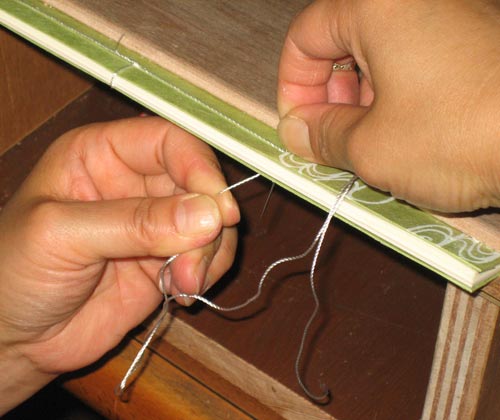
These books are made totally by hand! Check the page and see!
Posted by Dave Bull at 1:23 PM | Comments (1)
« May 2007 | Main | July 2007 »
A page with a complete set of photos showing how we are making the books for the My Solitudes project is now online.

These books are made totally by hand! Check the page and see!
Posted by Dave Bull at 1:23 PM | Comments (1)
Continued from [River in Summer] - Block Scans | Starting point of the thread is [River in Summer]

Last night saw the completion of the printing on the second batch; the edition is now complete, and the blocks will be set aside to dry. Just when they might ever be used again is completely unknown, but they will be wrapped up and carefully stored away.
The edition documentation page has been updated with relevant information from the printing sessions, including a couple of photographs that show a slight variance between the first and second batches. I decided part-way along to make a change in the lighting of the tent - letting us see inside it more clearly ...


And now, with the real work out of the way, here's a bit of fun ...
During the run of the second batch, I tried a little experiment - I skipped one of the sheets in the pile while printing the key block impression. For all the other blocks, I let it go through as normal, so we now have a copy of the print minus the key lines:
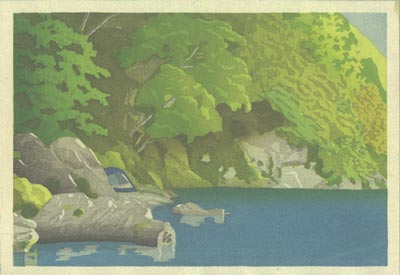
This doesn't 'work' as a good print, because there is just not enough definition between many of the adjoining colour areas, but it does provide some hints about how such a print could be designed. We'll have to see if this idea looks useable for one of the future designs in the series ...
Posted by Dave Bull at 5:55 PM | Comments (2)
Every morning for the past few days I have been enjoying visits from the kingfisher who lives somewhere along the river that passes below my workshop window.
He shows up most mornings at around 10:30, and sits on the riverbank or on some brush stacked up in the water, looking for something tasty to come to hand. I don't have any special camera gear to 'catch' him properly, but here's a quick shot taken some time ago with the video camera that I use to run the webcam. This is what I see while sitting at my printing bench!
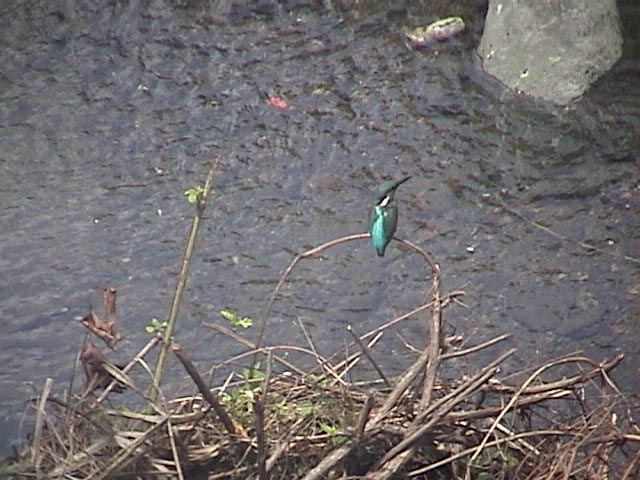
My 'friend' the kingfisher occasionally appears in the 'A Story A Week' episodes. Here is one of them ...
Posted by Dave Bull at 4:52 PM | Comments (0)
Now that I've stepped (slightly) into the world of making original prints, rather than reproductions, I think I should clarify the edition details of these prints. A number of the collectors have expressed interest in having me document this aspect of the process too, in addition to the construction steps that we have seen ...
So there is now a new page on the site - the Edition Documentation page. And no - don't panic - my policy hasn't changed ... there will be nothing 'limited' about these editions ... The only thing that will ever 'limit' my print editions is when they put me six feet under!
Posted by Dave Bull at 1:27 AM | Comments (0)
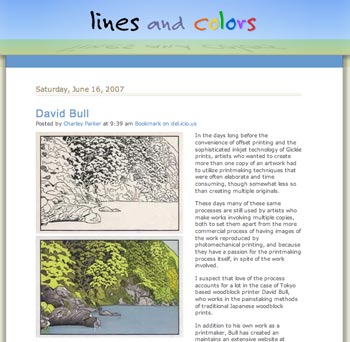
A few days ago, my work was featured on the Lines and Colors blog, which highlights a different artist every day. It was fun to see that the next entries immediately after mine were for Correggio, Picasso and ... Van Gogh! :-)
Posted by Dave Bull at 11:08 PM | Comments (0)
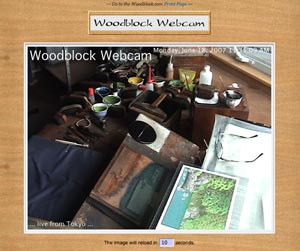
The Woodblock Webcam has been expanded; the small 320x240 image has quadrupled in size, to 640 x 480, allowing a much closer look at Dave's workbench while the work is going on ...
Posted by Dave Bull at 4:21 PM | Comments (3)
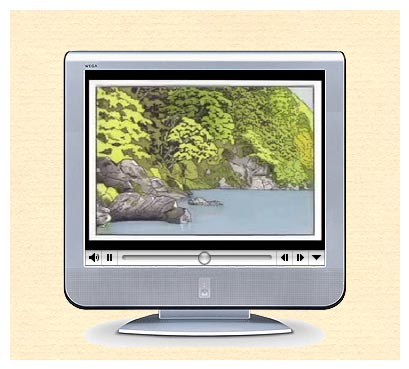
A 'morphing' video of the process of printing the River in Summer print is now online, linked from this page ...
Posted by Dave Bull at 9:06 PM | Comments (1)
Continued from [River in Summer] - Amendments | Starting point of the thread is [River in Summer]

Had a bit of 'extra' time this evening while waiting for the paper for the second printing batch reach the proper moisture level, so I spent some time with the scanner, and made a set of images of the entire block set for this print.
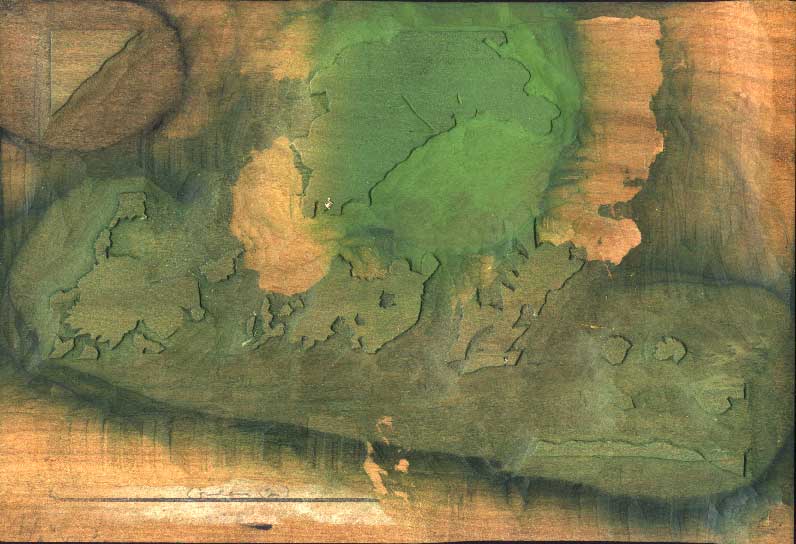
There's no sense in filling up this page with them all, but anybody interested can see them by looking in this directory: http://woodblock.com/roundtable/images/progress/river_summer/blocks/
Also, I've gone back through the previous pages of printing process, and put a link together with each step that will show the image of the block that was used for it.
Couple of points:
No, wait a minute ... those repairs are for you to find. I don't think you've wasted enough time on this project yet! :-)

The thread concludes in [River in Summer] - Edition Wrapup ...
Posted by Dave Bull at 7:32 PM | Comments (1)
Continued from [River in Summer] - Post Mortem | Starting point of the thread is [River in Summer]

OK, time for a couple of experiments this evening, picking up ideas from some of the suggestions made on the 'Post Mortem' post. (These next two print images are not Photoshop, but actual test prints ...)
Here's a version with some extra shadow in the undergrowth, similar to what Gary put in his version at that point:
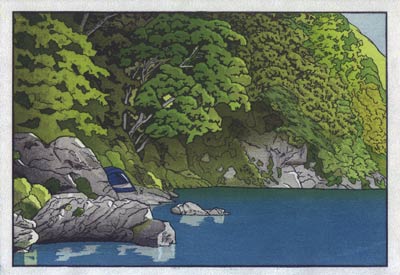
From the beginning I had a block carved for this, but didn't use it when doing the print run, as it just seemed to make things a bit too 'gloomy' under there. But I guess it does look better ...
Here's the impression (on scrap paper) (block):
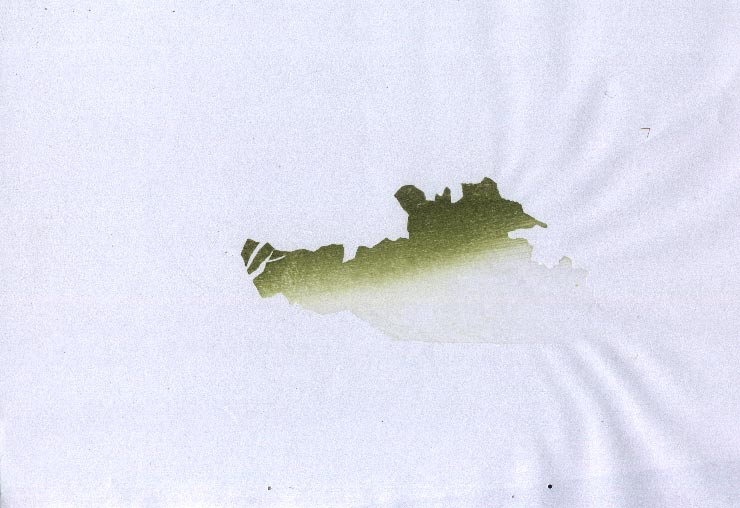
Next up, take one of those tests, and wipe a gradation across the water block, in line with Tom's suggestion:
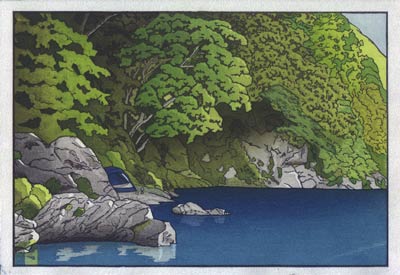
This completely wipes out the green gradation in the water over by the far bank, but it definitely improves the effect of the white stones in the water.
So what do you think? Should I put the stack of paper back into play? At the moment, I'm thinking that the undergrowth is a definite 'go', and the water gradation is a definite 'Hmm ... maybe' ... :-)

The thread continues in [River in Summer] - Block Scans ...
Posted by Dave Bull at 12:26 AM | Comments (14)
Continued from [River in Summer - 22] | Starting point of the thread is [River in Summer]

OK, it's been a day since I finished up the printing work; time to stand back a bit, take a look at it, and see how it turned out.
Here is that final version:
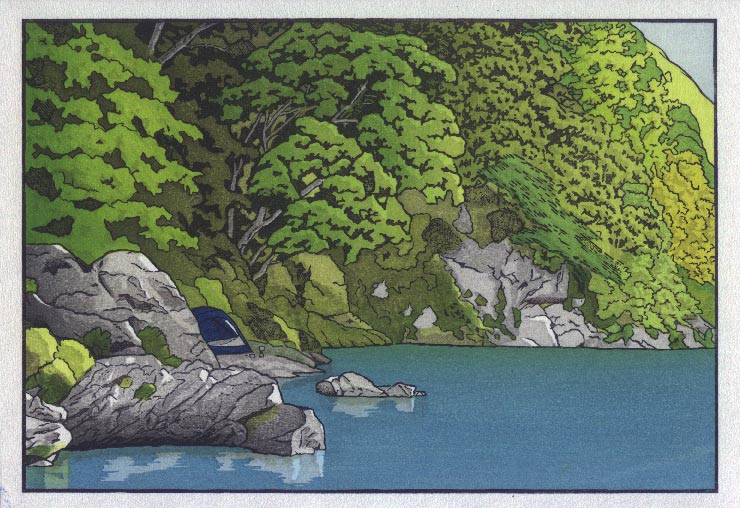
So how does this final version compare with the imaginary version I had in my head when I started?
Before I can ask that, I should try and explain just what I was aiming for when I started. Did I have this image 'finished' in my head? No, not at all. Honestly speaking, I had no idea at all what would come out at the end of the process. That may seem like a surprising thing for me to say, but let me try to explain, by comparing with the way that a print of this type would have been made back in the middle period of the last century, when the shin-hanga style was at its peak. The publisher would conceive of a particular project, either a single print he wanted to issue, or a themed collection, or whatever. At this point, there would be no particular 'image' in his mind of course, just the 'concept' ... the general type of picture. OK, that's where I myself started with this project a few months back ... a general concept. So far, so good ...
Next, he would have commissioned a designer to put some drawings down on paper. The publisher would obviously select a designer who he thought would be able to come up with something that matched the proposal, and of course the two of them would discuss the project requirements. Now in my case, publisher Dave sat down and had a chat with designer Dave, and it went something like this:
Publisher Dave: "... and so that's what I've got in mind. Do you think you can do the job for us?"
Designer Dave: "Well, as you know, I haven't got a lot of experience with this type of work, but I think I have a good understanding of what you want, and with a bit of help from my camera, I think I can hand in some decent line drawings for your people to work with."
Publisher Dave: "Yes, I guess I'm sticking my neck out a bit here by going with a beginner for this job, but I kind of like your attitude, and I'm willing to give you a try."
Designer Dave: "Thanks! I know you won't regret it!"
Designer Dave then headed off with his tent, and spent quite a lot of time sitting by the river, scouting out places that he thought would make interesting designs. Here's an aerial view of the place that he settled on for this print. The 'X' marks the spot on which he was standing, looking in the direction of the red lines ... (click it for an enlargement):

What did he see from that point? Here's the shot he brought home with him, with a white line showing where he mentally cropped it for the print:

Now that's not a particularly 'beautiful' image. The vegetation is just a mish-mash of brush and spindly trees, nothing attractive at all, especially in the flat light. But if you sit there and look at it, and then think about how tree shapes could be drawn across the hillside, and how a good carver would be able to carve this kind of tree shape, and that kind of tree shape, and of how a good printer would think about where the light was coming from ... then it begins to have possibilities.
So Designer Dave came home with this shot, loaded it into his Mac, got out his pen tablet, and started drawing on top of this image. He worked at it until it looked sort of OK, and then handed in his line-drawing to Publisher Dave.
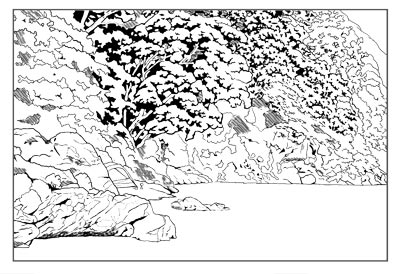
Publisher Dave: "Wow, you've certainly gone in for a lot of detail, haven't you! This isn't an o-ban print you know, it's going to have to be mounted inside an A4 size book. A lot of this detail is superfluous ... It's going to take twice as long to carve as I expected. And look at all those different tree shapes - are you expecting all those to have different tones?"
Designer Dave: "Oh, please ... let's give it a try. I know that all those extra colour blocks will be expensive to print, but I think the result should be worth it!"
Publisher Dave: "No way ... This is completely uneconomical. Try again, with far less detail."
Designer Dave: "Look, how about if I were to work for nothing ... take the money you would have paid me, and apply it to the craftsmen's fees ..."
Publisher Dave: "That's the only way that this project could work ... OK, if you insist!"
At this point, all that exists of the print is the line drawing ... no colours, no colour separations ... no 'finished' image at all. But the publisher has a secret weapon - two very highly skilled craftsmen: a carver and a printer. These men could take a child's scribble and turn it into something drop-dead gorgeous. He talks to the carver first:
Publisher Dave: "OK, here's that project I was telling you about ... the first one from that 12-print set of nature designs."
Carver Dave: "Cheeze, look at all that detail ... are you nuts?"
Publisher Dave: "Please ... bear with me. We're going to have to tighten the rein on this designer soon, but let's give him his head for this experiment ..."
Carver Dave: "OK, it's your money ..."
Carver Dave then sets to work. He cuts the keyblock first, pulls a bunch of kyogo impressions, and sends those over to Designer Dave. As expected, Designer Dave asks for a bunch more blank sheets, because there weren't enough. Carver Dave shrugs his shoulders - it's not his money - and sends them over. When the batch of sheets comes back, all covered with tiny detailed colour breakdowns, he thinks about calling Publisher Dave with his concerns, but decides to just plough ahead with the job. A few weeks later, the set of colour blocks is done, and sent off to the publisher.
The traditional publisher would at this point then think about which of his printers to use. It's a bit of a difficult choice this time, because with an unknown designer, there is no easily recognized style. Most of the better printers are easily capable of coming up with a pleasing set of colours, as long as they know what is roughly expected of them. This though, is a new designer, with no established style. Our story continues with Publisher Dave deciding to send the set of blocks over to Printer Dave ...
Publisher Dave: "I think you get the idea here. It's full of detail, but not particularly complicated. We want to try for a kind of early morning light. Nothing too gloomy in the shadows, but put enough depth in there to give the highlights a nice clean brightness. Nothing complicated on the water, but if you can, try and give it the impression of being deep over there at the far bank ... Other than that - over to you!"
Printer Dave: "OK boss ... By the way, what kind of paper are we using for this job?"
Publisher Dave: "The usual - the good stuff from Ichibei Iwano. With all these overprintings, I don't want to mess around with anything cheaper."
Printer Dave then sets to work, following the guidelines the publisher outlined. He does a few trial proofs, playing around a bit with different greens, and some different effects in the water, and then shows them to Designer Dave for comment.
Designer Dave: "Wow ... you've really started to bring this thing to life ... I think there's a nice print hiding in there!"
Printer Dave: "What do you mean 'hiding'? ... OK, OK, don't get upset ... let's talk about it ..."
The two men then have a good discussion of how to proceed from here. They bat it around, trying different combinations of greens in the vegetation, and different levels of grey on the stones. They spend a few days on this work, but then get a phone call from the publisher.
Publisher Dave: "What the hell is going on over there! Get that thing nailed down, and get going on the edition! We've got the staff here working like crazy on getting the book volumes ready to receive them - we have to get this one out the door before the end of the month!"
Designer Dave: "But we need more time to get this thing really perfect ..."
Publisher Dave: "Perfect? What's 'perfect'? The perfect is the enemy of the good ... If I give you your head, that print will _never_ get shipped. Sign off on a proof right now, and then get out of there and leave him alone! He's perfectly capable of making an attractive print ..."
Printer Dave then sets to work, and day after day over the next couple of weeks, quietly 'builds' the print. He makes plenty of adjustments along the way, based on what is developing before his eyes, and then after ten days work, and 31 impressions, calls it a day, dries them off, and sends them to the publisher.
The publisher opens the package, nods his head in general approval ... "Not bad ... Could have used better shading under that central tree; those water highlights would have been more effective if they had been deeper, and I don't know where he came up with the green on that tree over there ... But yeah, I can live with this ... Ship it!"
So ship it they did ...
***
At this point I had intended to give a list of things that I think 'worked' in this print, paired with a list of things that weren't so successful. But I think that before I do, it might be interesting to see what parts of the print other people find either particularly effective, or not, as the case may be.
Please use the comments box below, and feel free to post your ideas/thoughts/comments/criticism/etc. on this print!

The thread continues in [River in Summer] - Amendments ...
Posted by Dave Bull at 7:22 PM | Comments (8)
Continued from [River in Summer - 21] | Starting point of the thread is [River in Summer]

So here we go ... let's wrap this one up!
Impression #28 - Gradation on tree at far left ...:
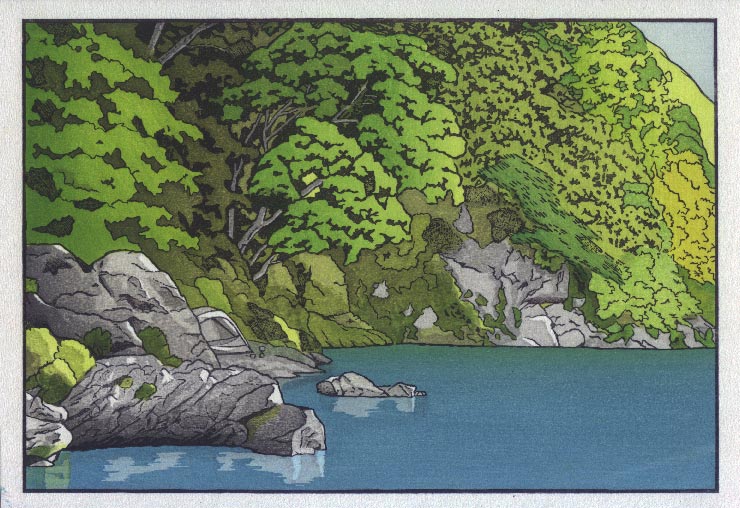
That impression by itself (on scrap paper ...) (block):
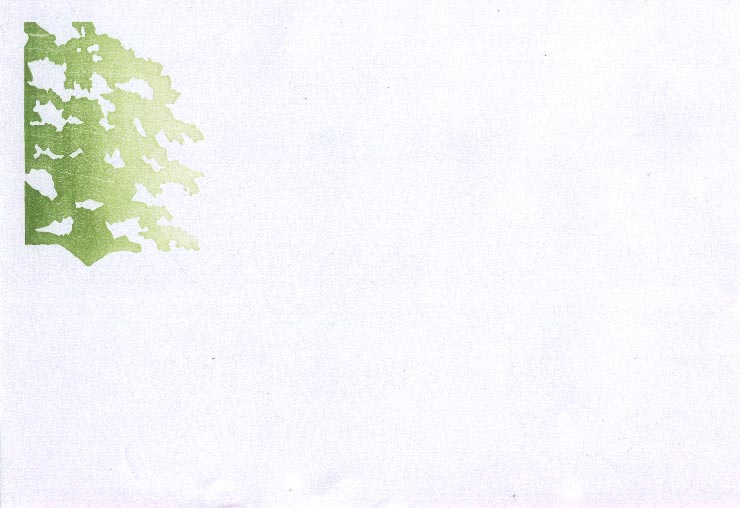
Impression #29 - Grey tone block over all tree areas ...:
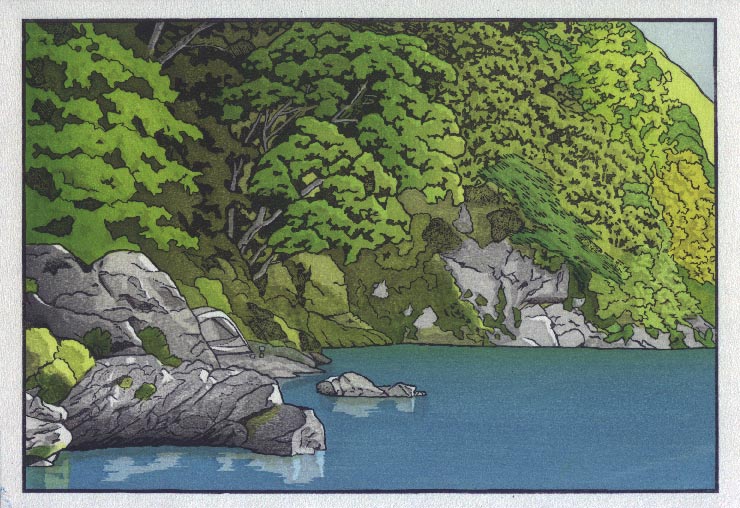
The impression by itself (on scrap paper ...) (block):
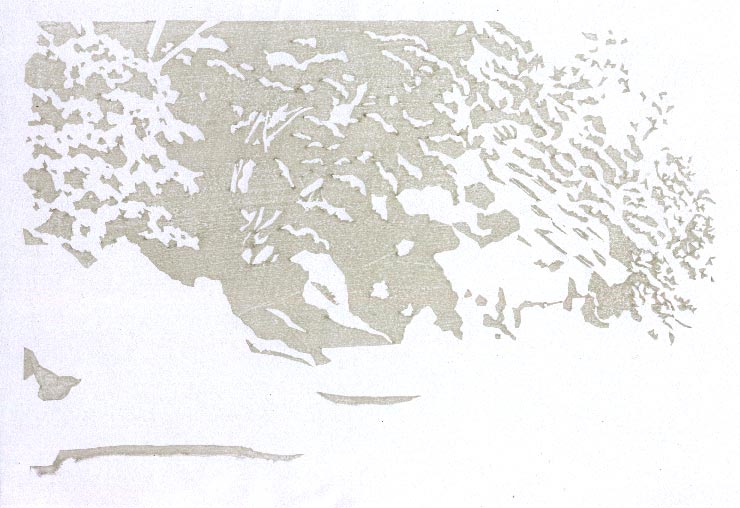
This kind of block is known as a 'nezumi-ban' (literally 'mouse block' - meaning 'mouse colour', or 'grey block'). It underlays all the tree areas, and is cut with patterns that add shadow effects to all the areas it touches. Here are a couple of closeups - 'before' and 'after':
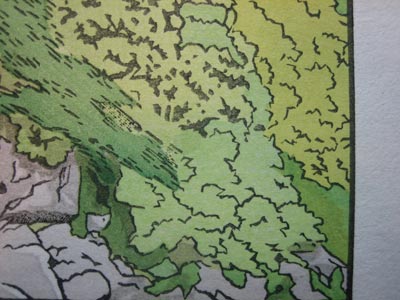
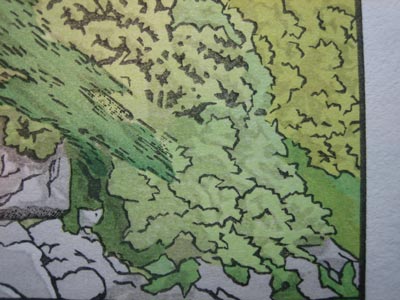
Impression #30 - Tent ...:
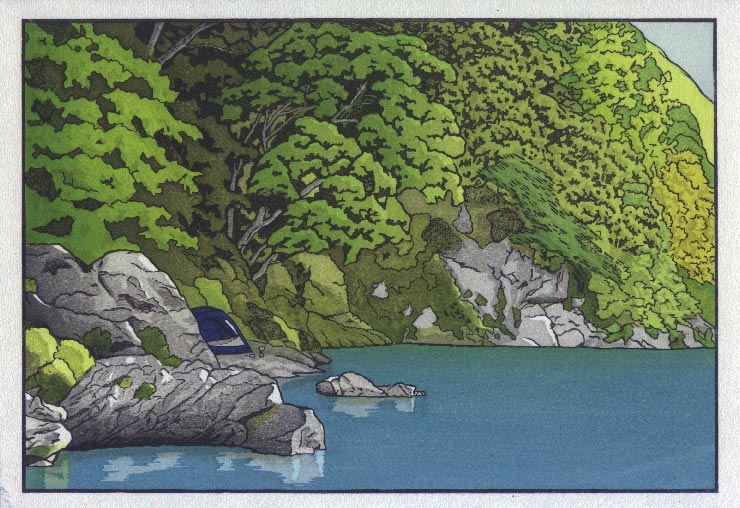
That impression by itself (on scrap paper ...) (block):
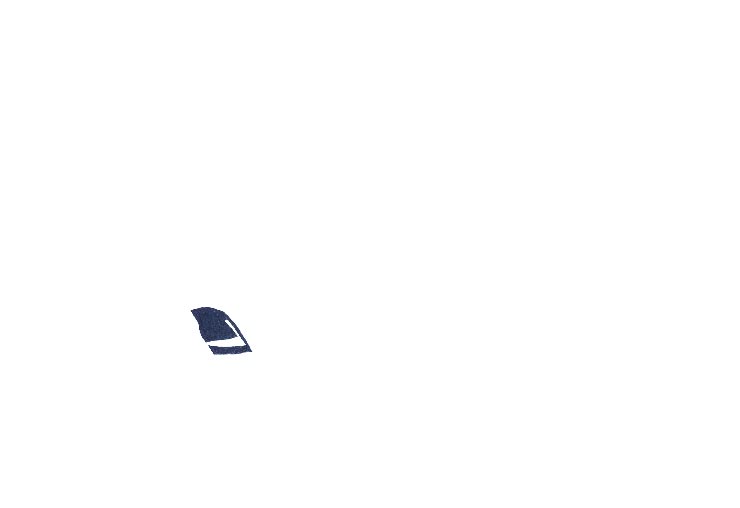
Impression #31 - Then, I think we need a repeat of step #14, to add depth ...

That impression by itself (on scrap paper ...) (block):
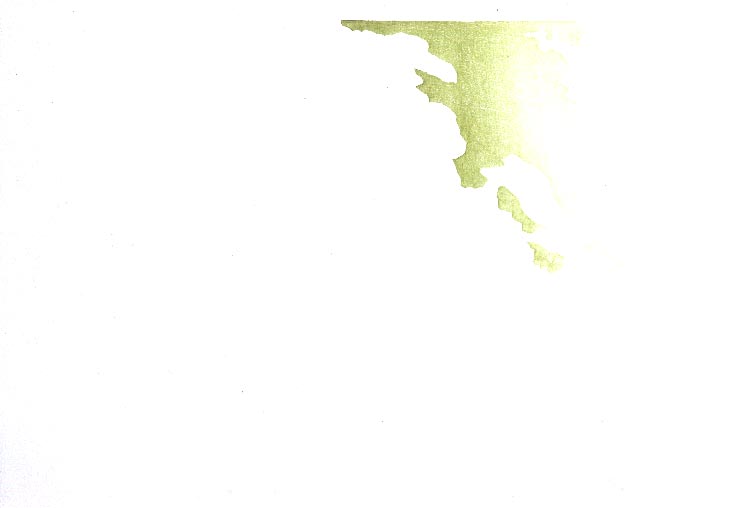
Seems I should have done step #14 a bit deeper; it needed to go darker at the left side, to make the more brightly lit front trees stand out more prominently.
So there we have it ... I started May 1st, sitting down to figure out what the design should be, and here she is. As I mentioned earlier, the printing I have just finished is the first batch - 100+ copies. After a couple of days getting the story printed out ready for sending to Ichikawa-san for binding, I'll make another pile of paper wet for printing the second batch of 100+. I should be finished that by the end of the month. So it seems as though my basic concept of one every two months seems basically reachable.
Tomorrow, after I've had a bit of time to look at this print and think about it, I'll make another post to this RoundTable giving my thoughts on how it turned out, and asking for comments/etc. from viewers. I think it turned out pretty well, but I can already see many places where it should have been better. I'll be interested in hearing what suggestions everybody can add to the mix; please give it some consideration, and then tomorrow, send in your comments ...

The thread continues in [River in Summer] - Post Mortem ...
Posted by Dave Bull at 2:08 PM | Comments (2)
Continued from [River in Summer - 20] | Starting point of the thread is [River in Summer]

Another four colours done today ... wondering if I might be able to finish tomorrow ...
Impression #24 - Gradation at far side of water ...:
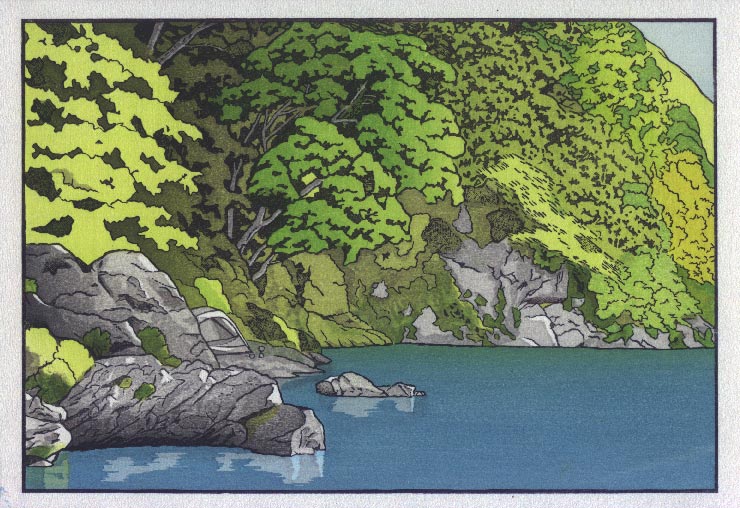
The water is certainly very nice and smooth, but I thought it needed a bit of extra 'something' over against the far bank ...
That impression by itself (on scrap paper ...) (block):
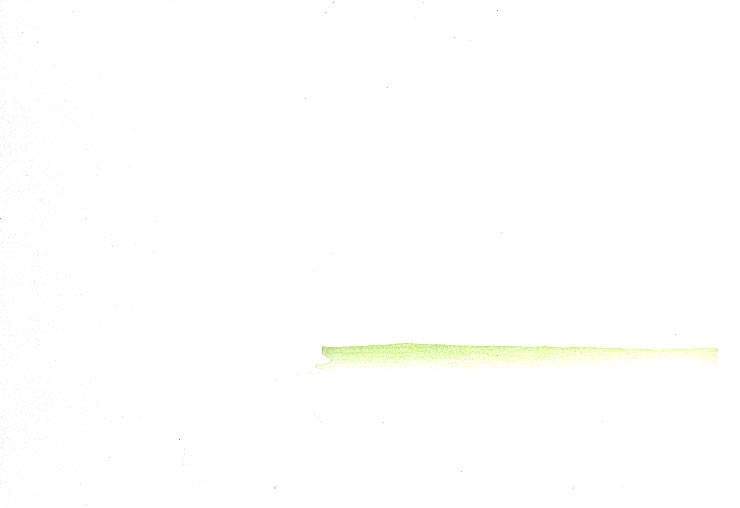
Impression #25 - Building up more depth on the mossy stones ...:
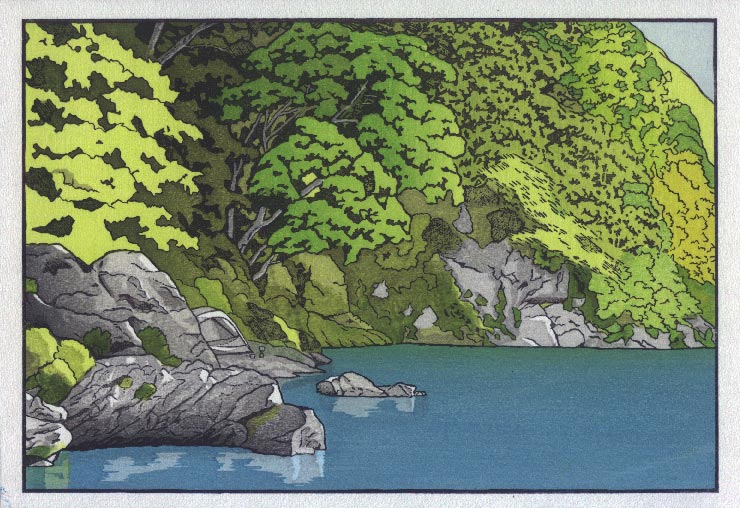
That impression by itself (on scrap paper ...) (block):
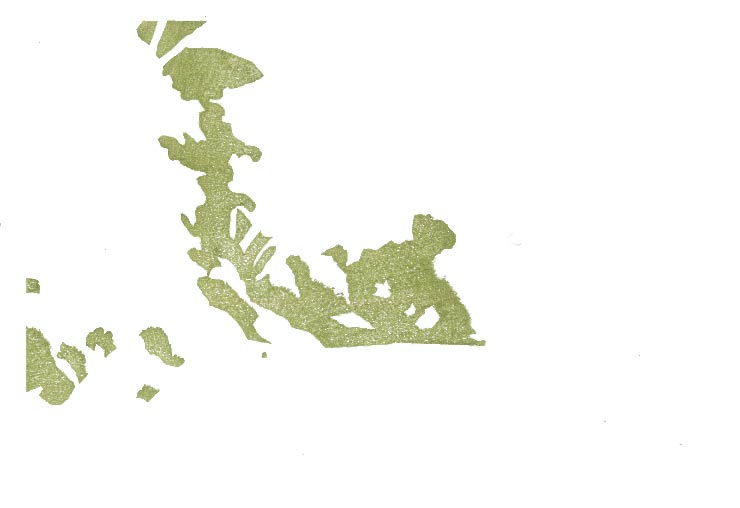
Impression #26 - Base tone on the tree at left ...:
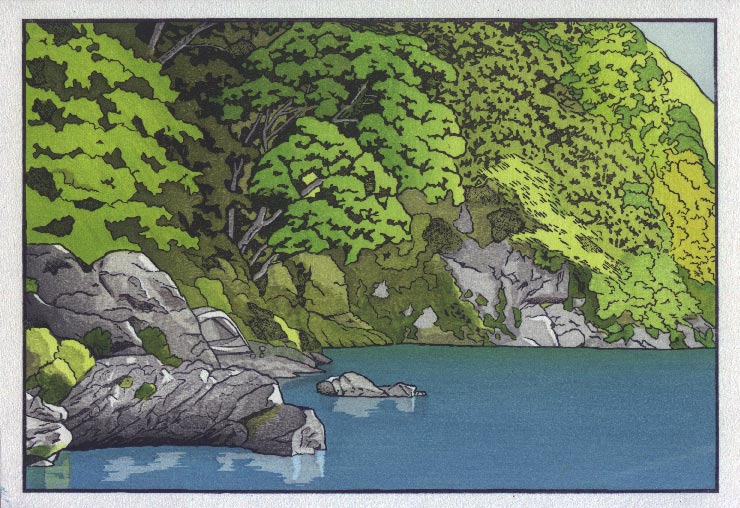
I think there should perhaps be one more impression on this tree - a gradation from the left ...
That impression by itself (on scrap paper ...) (block):
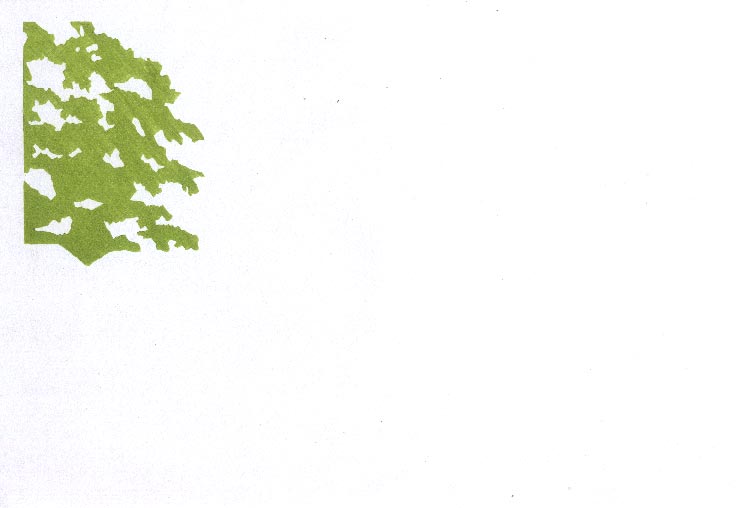
Impression #27 - The last remaining untouched tree ...
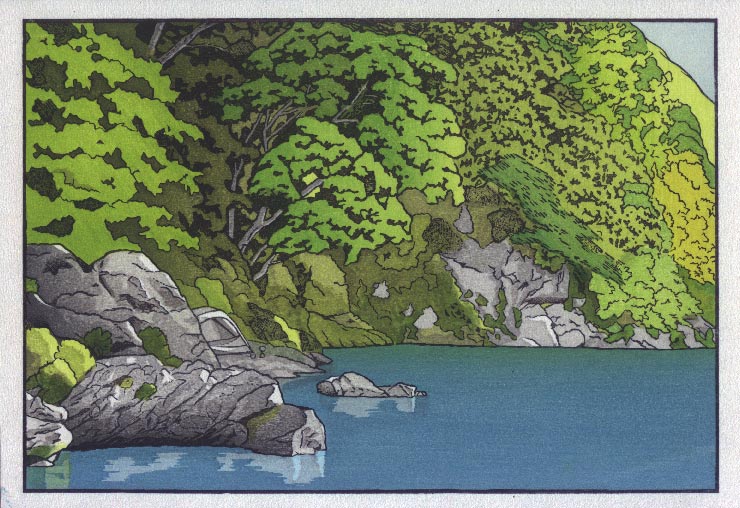
That impression by itself (on scrap paper ...) (block):
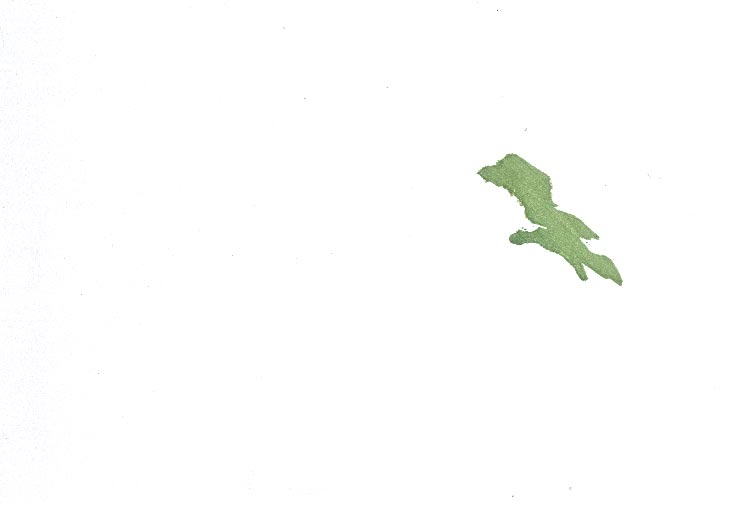

The thread continues in [River in Summer - 22] ...
Posted by Dave Bull at 11:20 PM | Comments (1)
Continued from [River in Summer - 19] | Starting point of the thread is [River in Summer]

Here are the next four impressions (another good printing day!) ...
Impression #20 - Second portion of the central tree ...:
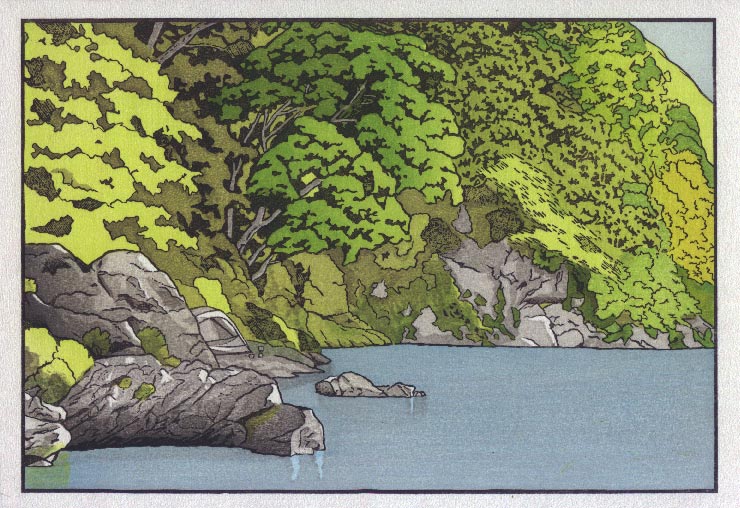
We can now see the reason for splitting this tree into two pieces ... Putting gradations on the pieces separately moves them into different 'planes'.
That impression by itself (on scrap paper ...) (block):
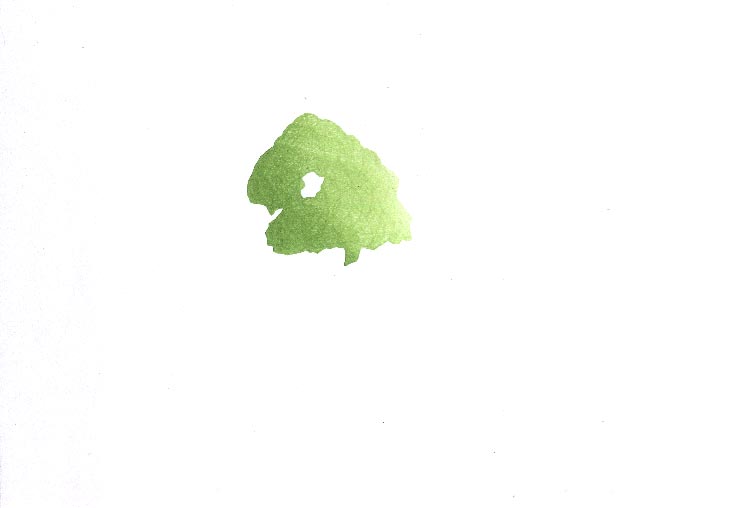
Impression #21 - Building up depth in the left background ...:
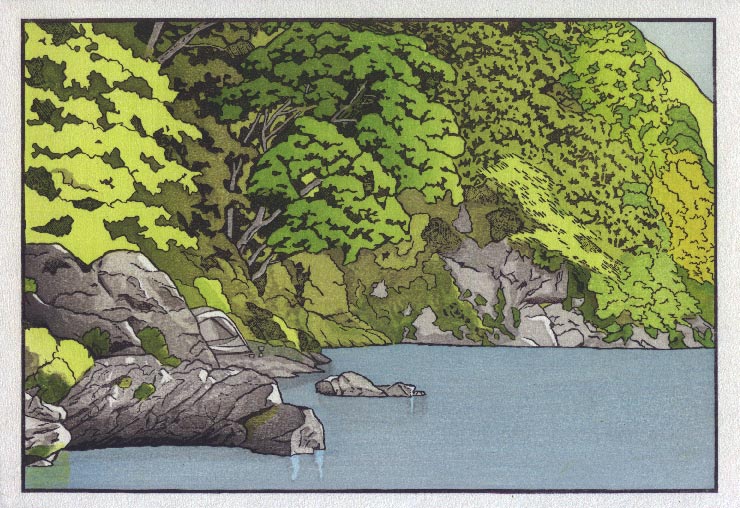
That impression by itself (on scrap paper ...) (block):
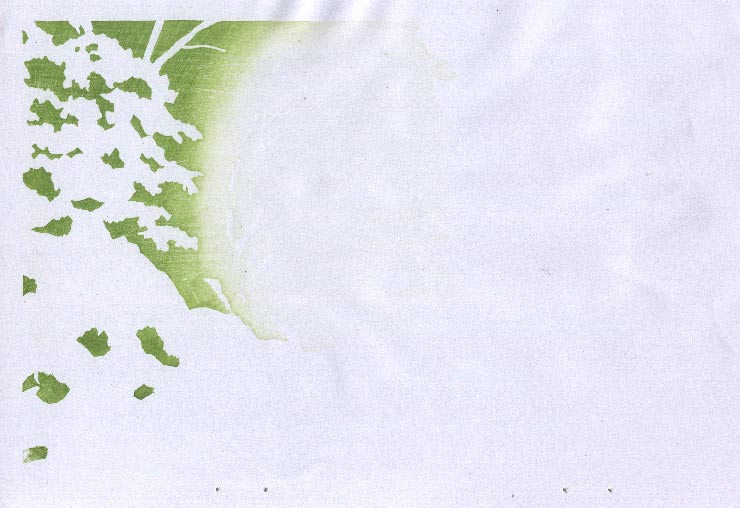
Impression #22 - Still more depth in the background ...:
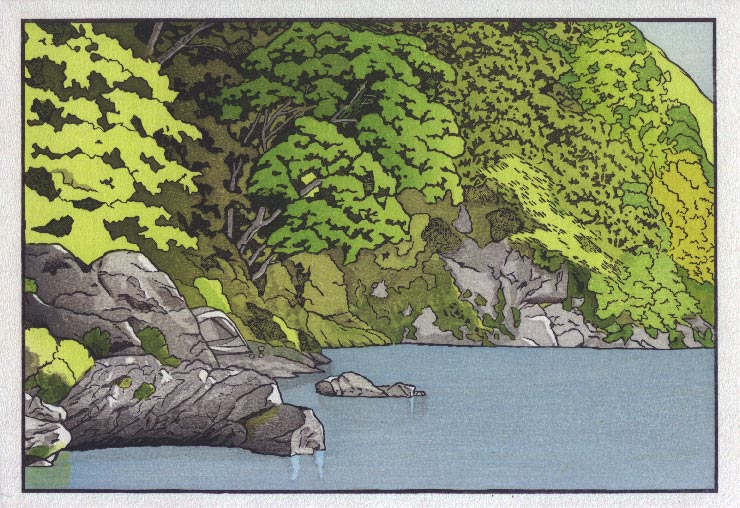
This block overlaps quite a bit with the previous one, but not completely. The background sections 'hidden' behind that frontmost tree at the left (the one with no colour yet) are now deep green. Using two blocks for this area instead of just one, gives more variation in the depth of the background areas.
That impression by itself (on scrap paper ...) (block):
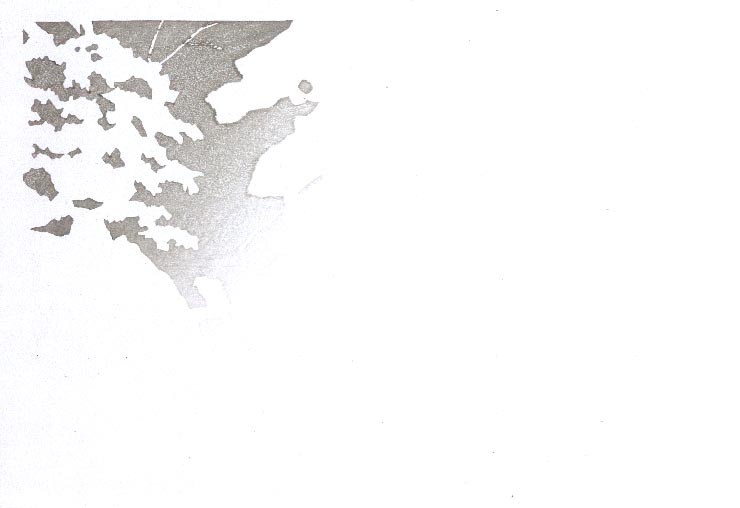
Impression #23 - Deeper tone on the river ...
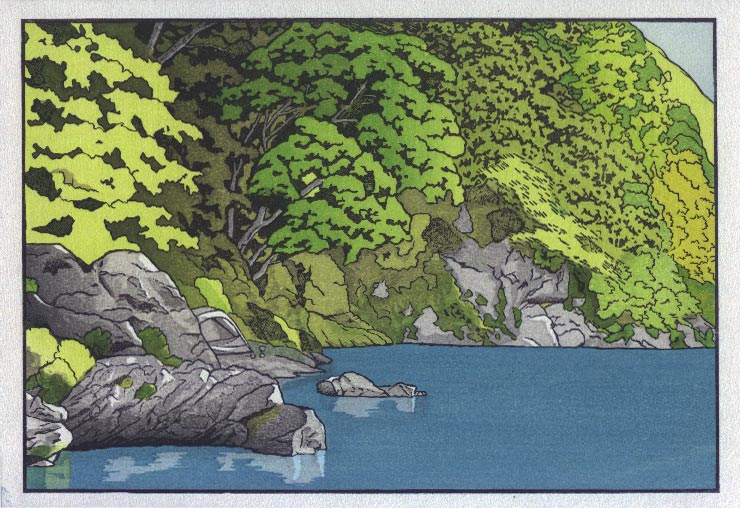
Interesting that the small area of the previous blue that still shows through, now looks so much lighter than it did in the previous image! But of course it hasn't changed ... simply it looks lighter because it is surrounded by darker stuff ...
That impression by itself (on scrap paper ...) (block):
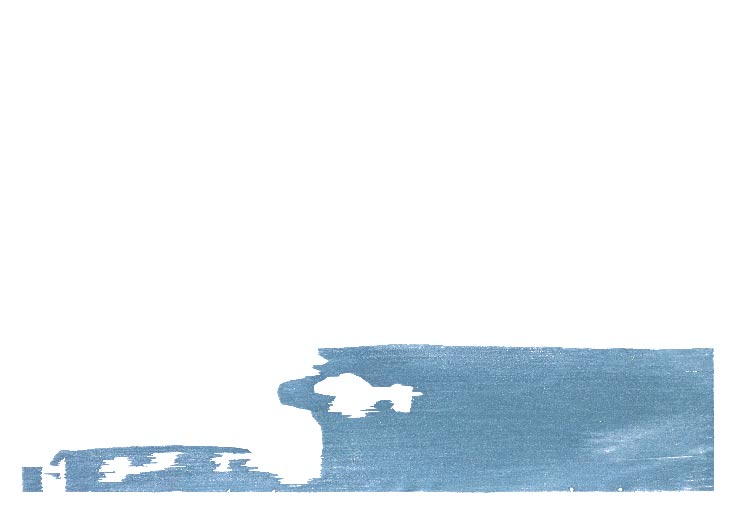

The thread continues in [River in Summer - 21] ...
Posted by Dave Bull at 11:51 PM | Comments (4)
Continued from [River in Summer - 18] | Starting point of the thread is [River in Summer]

Three impressions today ...
Impression #17 - Miscellaneous forest areas ...:
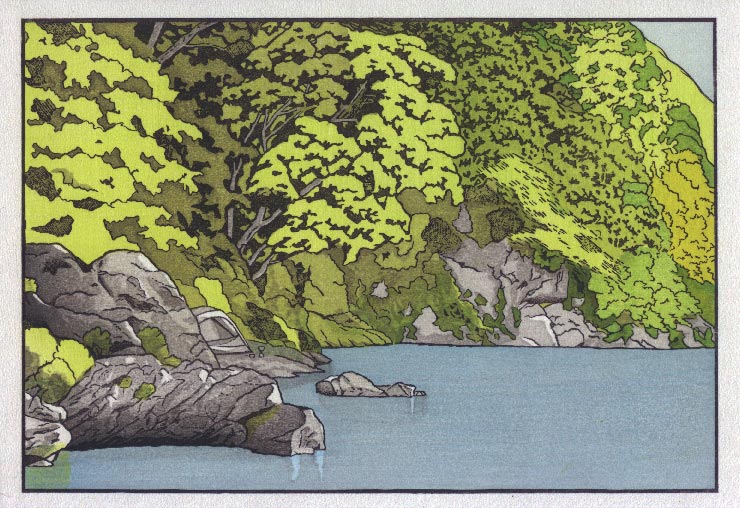
That impression by itself (on scrap paper ...): (block)
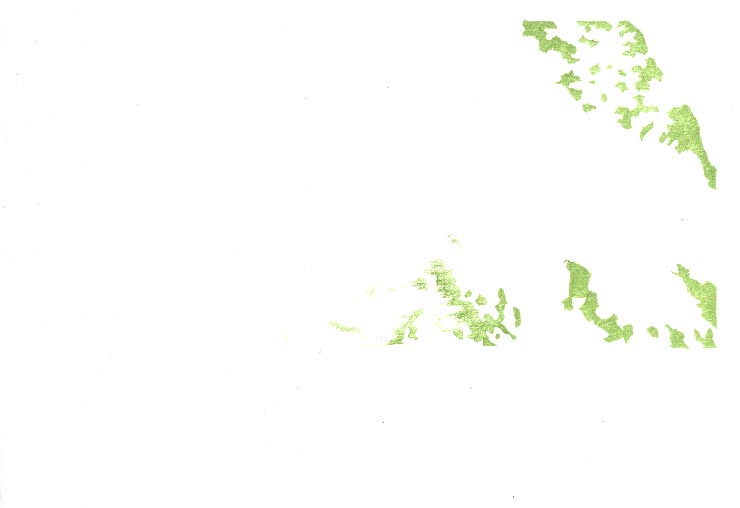
Impression #18 - Gradation on another tree over at the right hand side ...:

That impression by itself (on scrap paper ...) (block):

Impression #19 - Gradation on part of main central tree ...
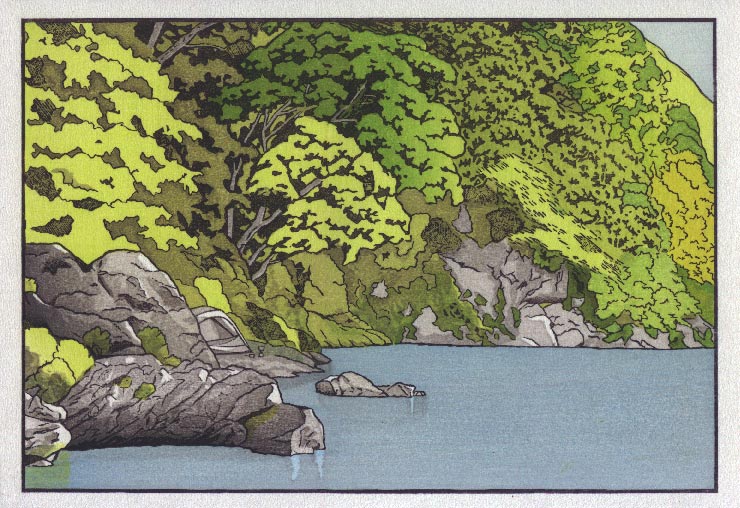
I had originally carved this tree all on one block, but after seeing what it looked like when printed, I decided to cut away the lower part of the tree, and move it to its own block ...
That impression by itself (on scrap paper ...) (block):
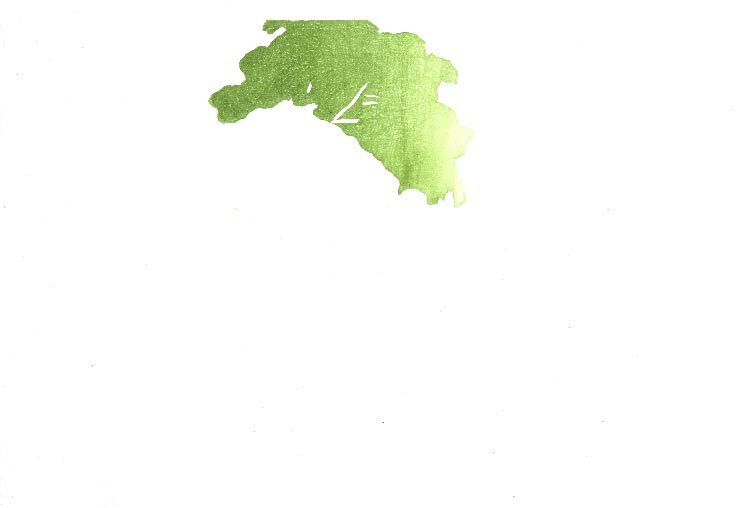
And looking at that last one, you can easily guess what the next one is going to be!

The thread continues in [River in Summer - 20] ...
Posted by Dave Bull at 12:11 AM | Comments (1)
Continued from [River in Summer - 17] | Starting point of the thread is [River in Summer]

Here are the next four impressions (another good printing day!) ...
Impression #13 - Small tree over at right hand side ...:

That impression by itself (on scrap paper ...) (block):
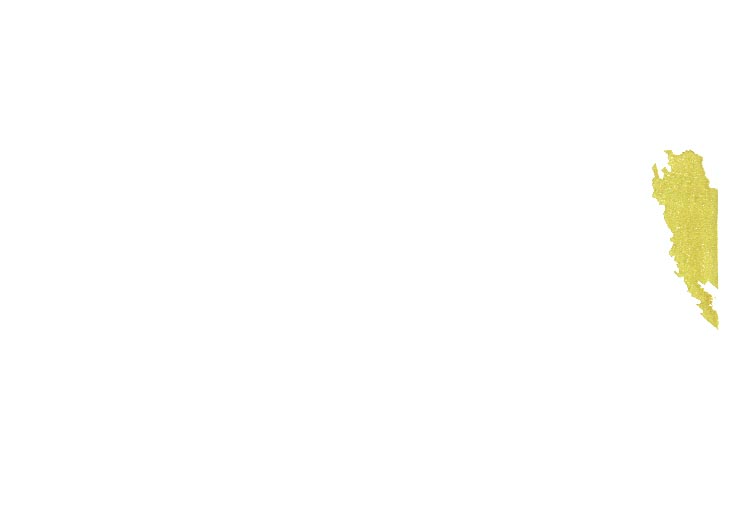
Impression #14 - Cascading tree area (slight gradation) ...:
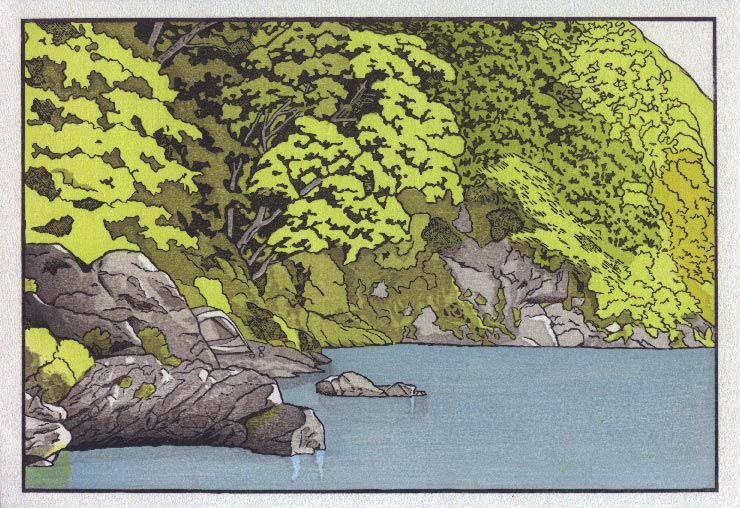
That impression by itself (on scrap paper ...) (block):
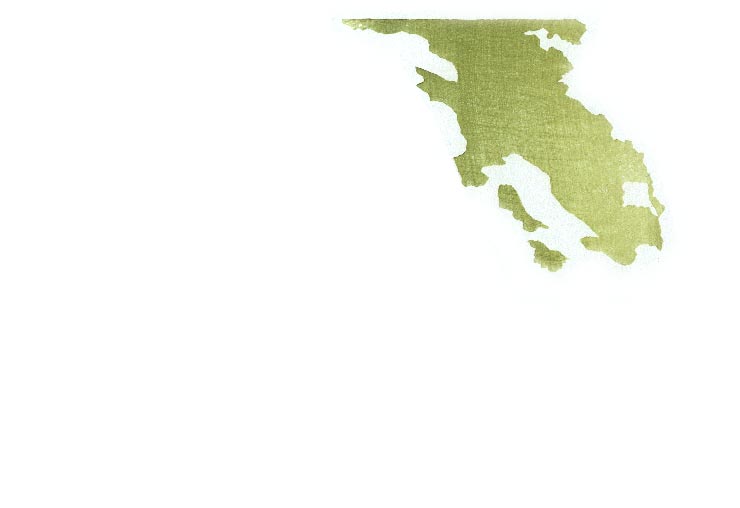
Impression #15 - Another tree over at the right hand side, and scattered patches of greenery ...:
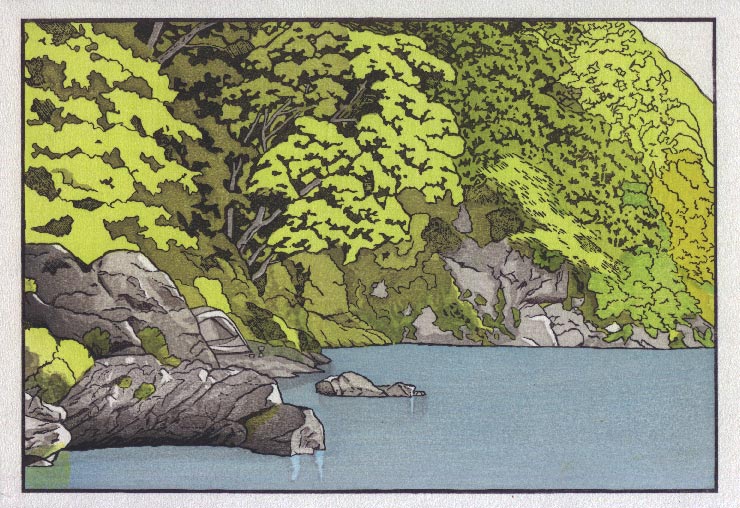
That impression by itself (on scrap paper ...) (block):
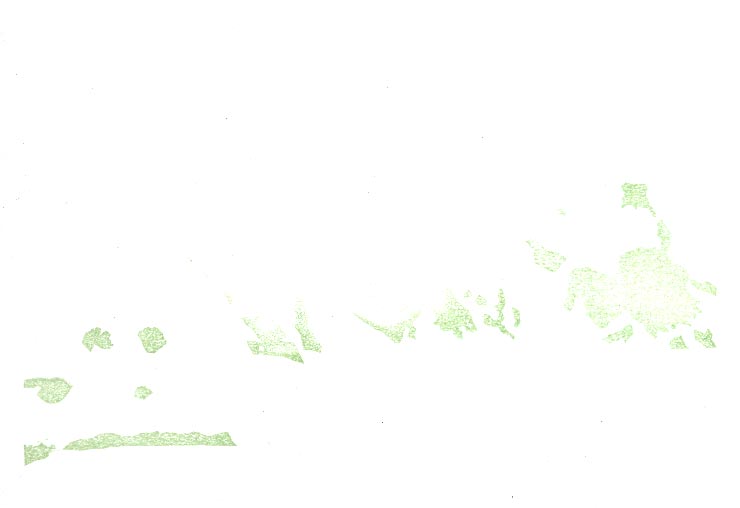
Might be sounding like a 'broken record', but all three of those tree areas will be touched still yet again, when it comes time to apply the nezumi-ban, a grey tone block ...
Impression #16 - Patch of sky ...

That impression by itself (on scrap paper ...) (block):
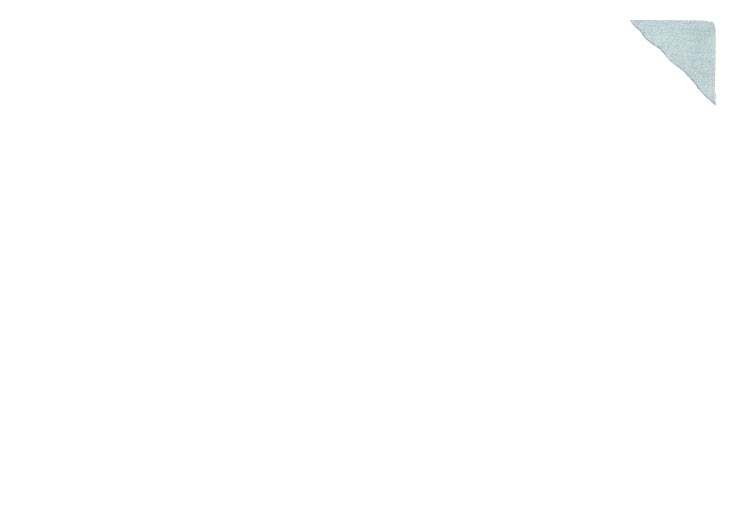

The thread continues in [River in Summer - 19] ...
Posted by Dave Bull at 8:07 PM | Comments (0)
Continued from [River in Summer - 16] | Starting point of the thread is [River in Summer]

Only two impressions in this update ... lots of other work going on at the same time! (... over on the book production side of things ...)
Impression #11 - Finally, we get something on this print other than grey or black! The pigment being used here is raw Prussian Blue, printed in a thin layer over the previously applied grey base. This certainly isn't the final river colour, although the tone you see here will 'show through' in a few places through cutouts in the block that will later be printed over top of this one.
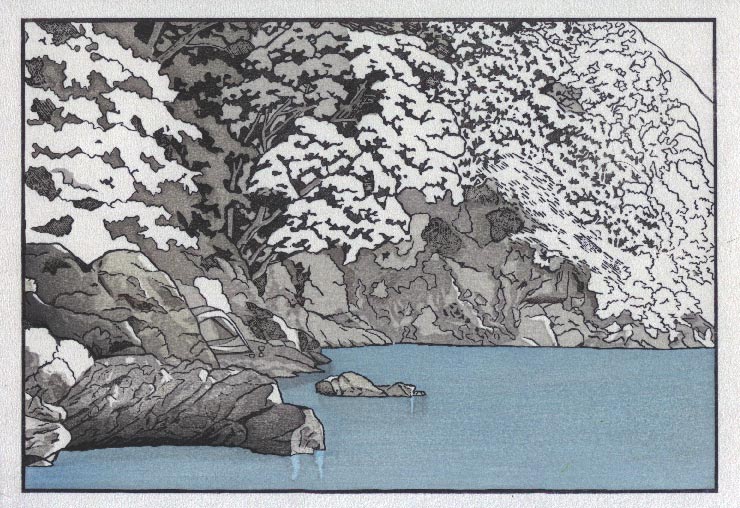
That impression by itself (on scrap paper ...) (block):
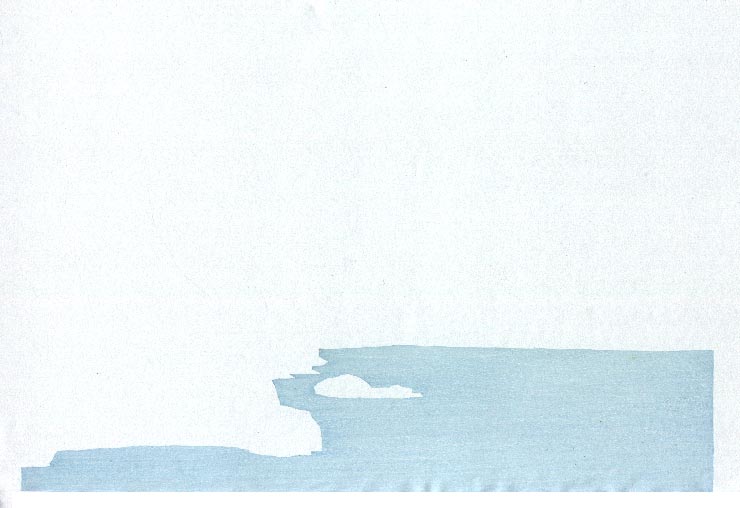
Before moving on to the next impression, a few words about what you will see ... The pigments used in this kind of Japanese printmaking are all transparent. This has a couple of very important ramifications when planning the arrangement of colour blocks:
1) Everything shows through. Nothing gets covered up, and whatever you put on the paper will still be visible in the finished print. Every colour is blended with whatever is on the paper already. (The previous blue impression is a perfect example - the 'clean' prussian blue doesn't hide the grey, it becomes toned by blending with it, just like a colour on a Photoshop layer set at X% opacity, blending with the colour below.)
2) You can't print light highlights onto dark areas. Unlike oil painting, or acrylics, or whatever, you can't take a brush, dab it in white pigment, and then touch highlights onto the image. You just can't do it. Any areas that are to be lighter than their surroundings, must be printed from separate blocks, and then avoided during subsequent printing of those darker areas. We've already seen this in this print - the modelling of the boulders started with the lightest tone, and then built it up step by step with blocks cut to create darker areas. The highlights are created by omission, not application.
So ... the same thing is now going to happen for the forested mountainside - work from light to dark - but with a major difference ... it's not just grey stone, but a complex area of mixed greenery, with various shades, various shapes, and various shadows. It's going to be quite a party! Let's begin ...
Impression #12 - Base tone under all greenery:
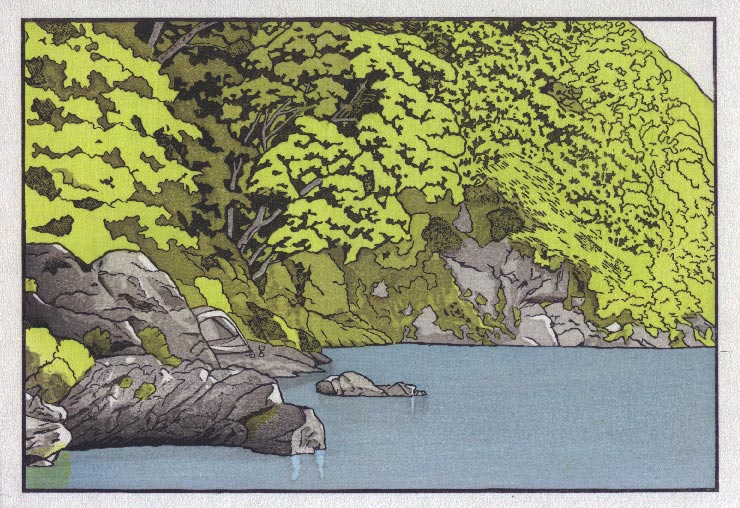
That impression by itself (on scrap paper ...) (block):
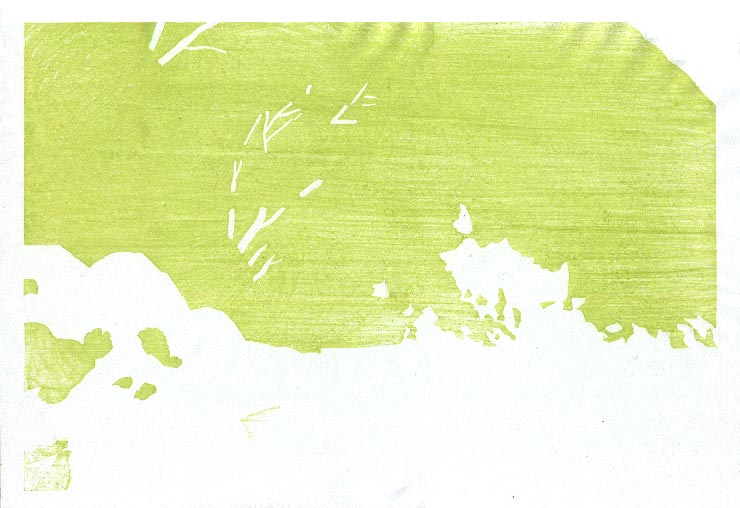
The only places on the sheet that remain untouched by pigment now, are the sky up in the top right, the scattered 'sunshine' highlights on the rocks here and there, and ... one little screw-up, where there is a bare white patch showing on the mountainside, over near the right side, which you can easily see if you click to bring up the enlargement. I guess when I cut the green block, I was thinking that spot was stone, but when I cut the base grey block, I was thinking it was greenery ... oops! (I'll make a 'plug' in one of the subsequent colour blocks to cover it up ...)
So with 12 impressions now done, we're roughly about 1/3 of the way through. I still don't know exactly how many there will be, but as far as I can tell at this point, it will probably be in the low 30's.

The thread continues in [River in Summer - 18] ...
Posted by Dave Bull at 7:40 PM | Comments (2)
Continued from [River in Summer - 15] | Starting point of the thread is [River in Summer]

Here are the next four impressions (it was a long full day of work yesterday!) ...
Impression #7 - More shadows and modelling of forms ...:
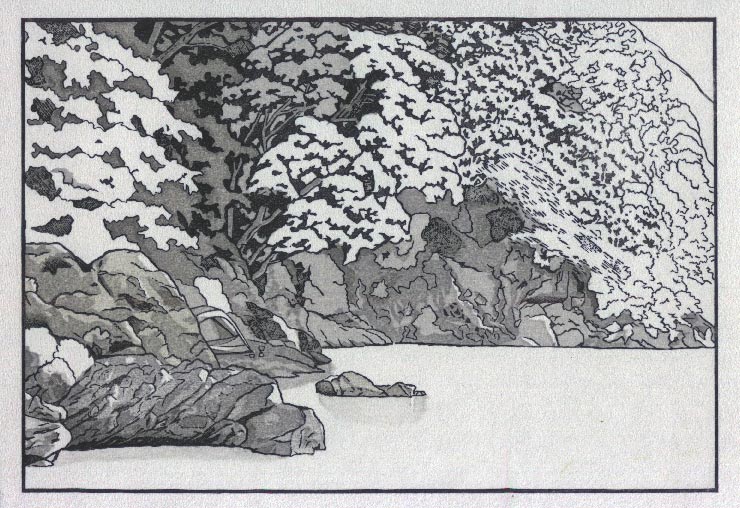
That impression by itself (on scrap paper ...) (block):
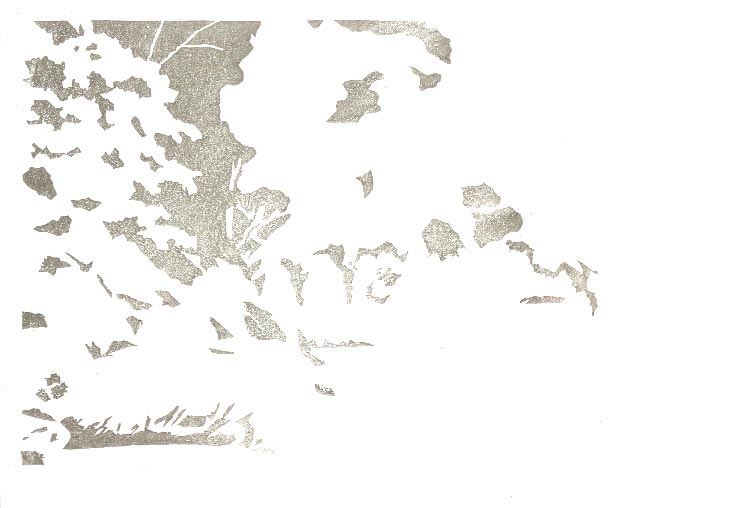
Impression #8 - Gradation on nearest boulder:

That impression by itself (on scrap paper ...) (block):
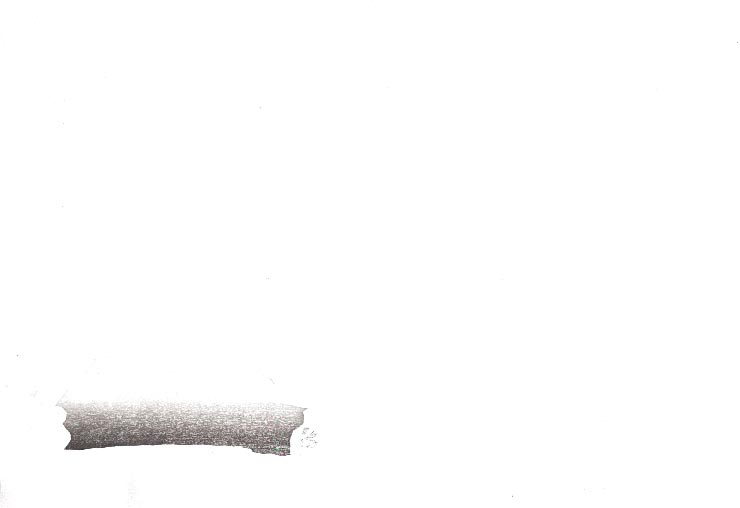
Impression #9 - Gradation on next boulder behind ...:
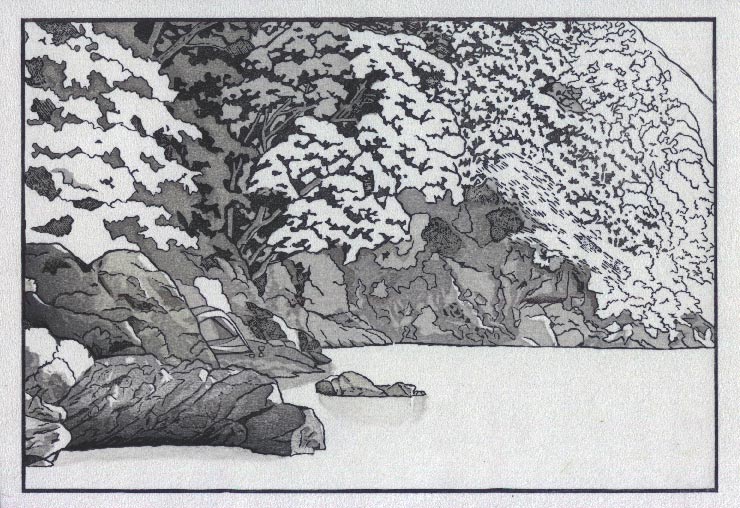
That impression by itself (on scrap paper ...) (block):

Impression #10 - Base undercoat for the water area. Hey there's a walrus in the river! Where did that come from? :-)
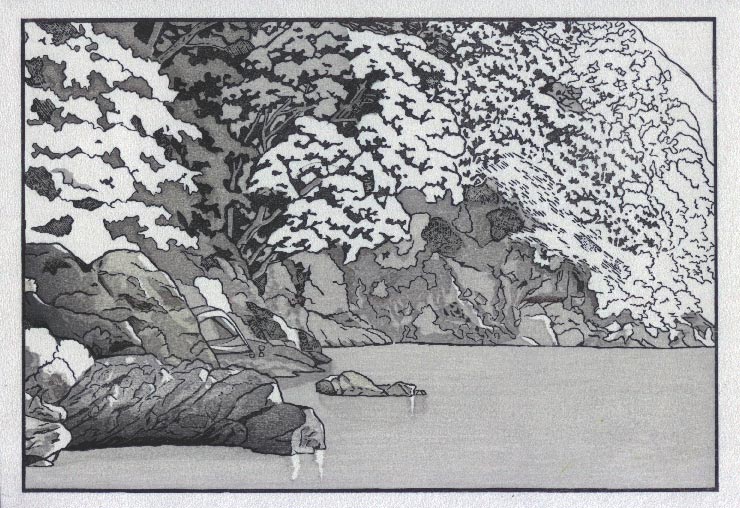
That impression by itself (on scrap paper ...) (block):
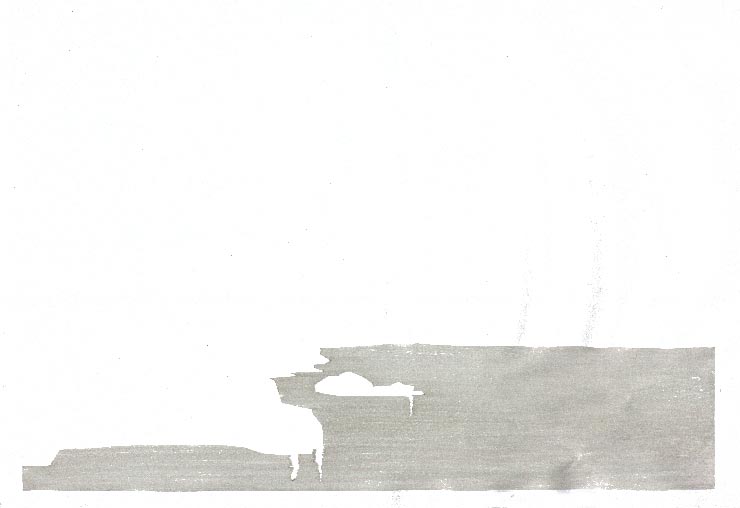
Just one more dullish tone to come (for now) before we start to add some chlorophyll!

The thread continues in [River in Summer - 17] ...
Posted by Dave Bull at 8:02 PM | Comments (0)
A transition/slideshow of all the progress images for the 'River in Summer' print is now online!
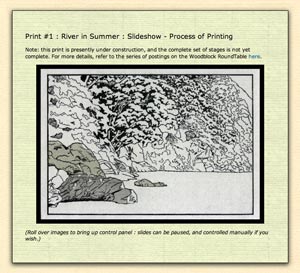
Posted by Dave Bull at 9:22 AM | Comments (2)
Continued from [River in Summer - 14] | Starting point of the thread is [River in Summer]

Here are the next three impressions ...
Impression #4 - Boulders ...:
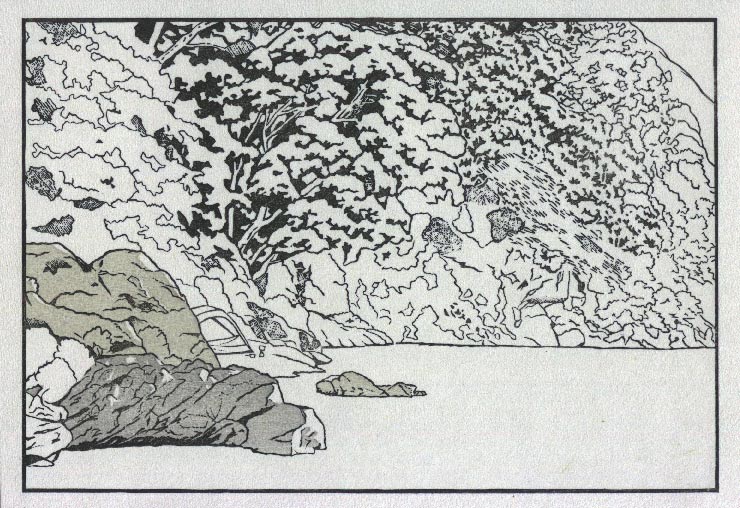
This boulder is going to be overhung by tree branches, so it gets a bit 'warmer' grey than the previous boulder out in the water area ... I doubt that this will be visible in the finished print, but anyway ...
That impression by itself (on scrap paper ...) (block):
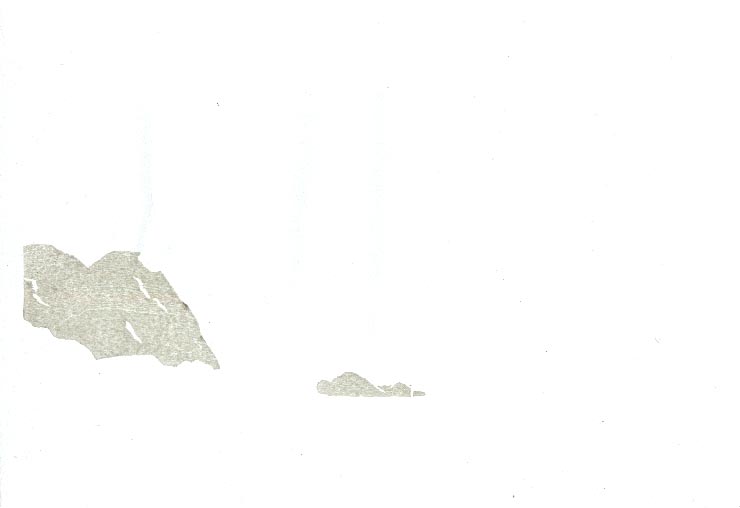
Impression #5 - Various rock faces, deeper shadow areas, etc.:
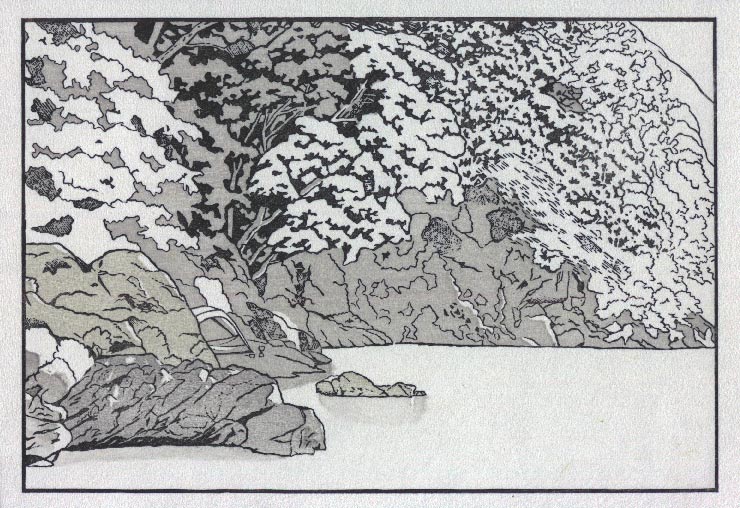
Getting the proper 'level' on an impression like this is quite difficult. This looks too dark at the moment, but once it is surrounded by other printed areas, it will appear much lighter in contrast. The two areas 'in' the water are wiped off with a tissue after brushing, but before printing - to give them a blurred, faint appearance.
That impression by itself (on scrap paper ...) (block):

Impression #6 - grey overlay for modelling shapes and shadows ... :
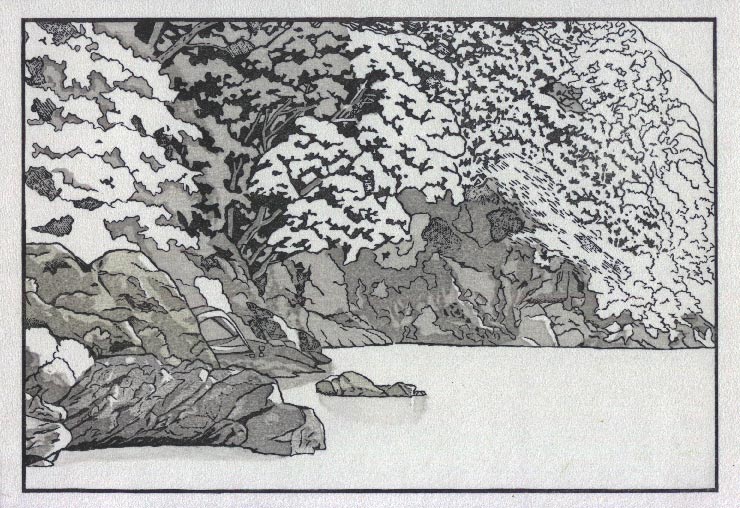
That impression by itself (on scrap paper ...) (block):
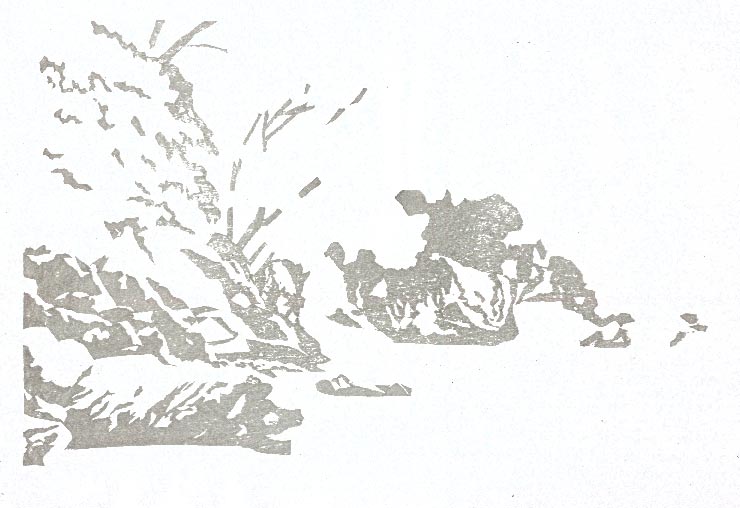
Do you think this print is feeling a bit relentlessly grey at the moment? What if I tell you that the next four impressions are still more grey and black! But things will change after that!

The thread continues in [River in Summer - 16] ...
Posted by Dave Bull at 10:29 PM | Comments (0)
In a private email with a friend, discussing the progress of my current print - the River in Summer, from the 'My Solitudes' series - he mentioned that he was trying to think of different ways that I could move forward with the colouring of the print. That gave me an idea ... why not make it easy for anybody to make their own version!
So here's what we're going to do ... I have created a full-size down-loadable version of the hanshita (the line drawing) that I used to guide the carving of the key block of this print.)

Feel free to download it, then open it up in any image editing software such as Illustrator or Photoshop. It is in png form, and is transparent, so it is very easy to add colours to different areas. Colour it in to make an attractive 'print', and then either post it online somewhere we can see it, or send me a copy and I'll post it here.
Instructions:
Go for it!
(There is a long thread on this RoundTable showing the progress of the print - from design through to finished version. The starting point of the thread is [River in Summer].)
Posted by Dave Bull at 1:05 PM | Comments (6)
Continued from [River in Summer - 13] | Starting point of the thread is [River in Summer]

Once the print is finished, I will be making a page with all the step-by-step images placed in sequence, but for now, let's show them here on the RoundTable. (Update: the slideshow with those images is here) (Update #2: Don't miss the Colour Your Own page, where people are making their own versions of this print!) Anyway, here we go with the step-by-step ...
Impression #1 - beta ban (block):

That's the result of the beta-ban printing - the margins aren't touched, but the central area of the paper is now smooth and flat.
Impression #2 - key block (block):
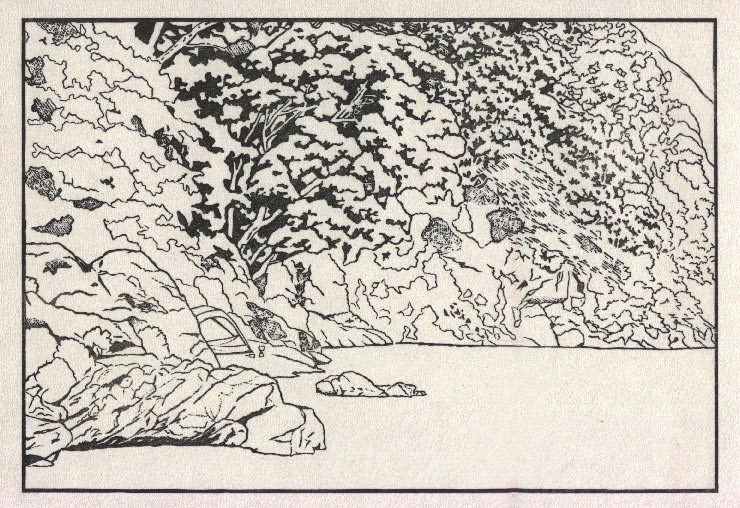
Because the paper is so smooth and receptive, very little pressure is needed to get a good impression of the keyblock.
Impression #3 - base grey tone on boulder:

This is the first of 'quite a few' tone impressions for the boulders. There are going to be five levels of grey, but it will take many more than five impressions to do it, as it was necessary to split some quite similar areas up onto more than one block ... for reasons that will become apparent later!
Here's that impression by itself (on scrap paper ...) (block):
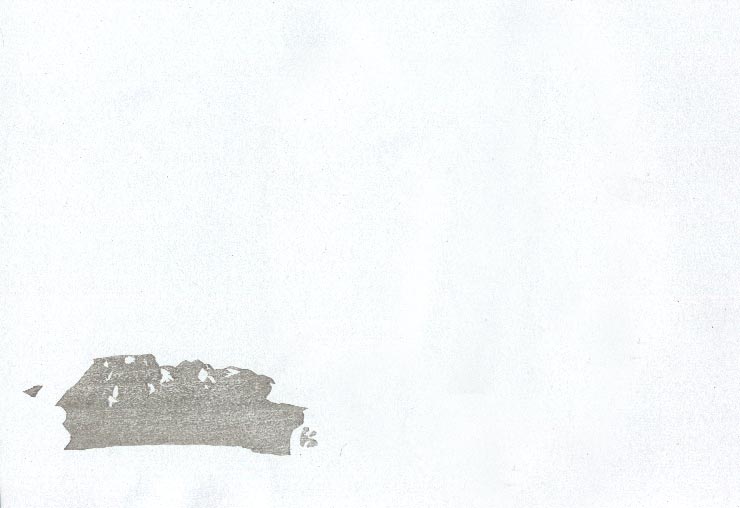
Note: All the process steps are clickable for larger versions. I am going to do my best to scan all these steps with the paper held in the same spot on the scanner bed, so if you want to play around, you can save copies to your own computer, and then 'stack them up' in image software (like Photoshop), to make a 'slideshow' of the print coming to life ...

The thread continues in [River in Summer - 15] ...
Posted by Dave Bull at 12:30 AM | Comments (3)
Continued from [River in Summer - 12] | Starting point of the thread is [River in Summer]

Let's have a look at the printing bench - where all the action will be taking place for the next couple of weeks. Here's an overview:
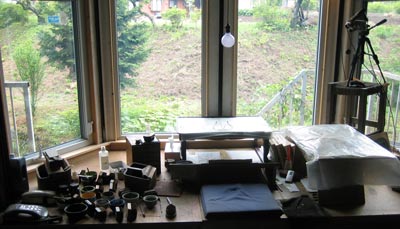
It's too bad I didn't take this shot a couple of days ago ... before Tamura-san across the river blasted his hillside with a weed-eater, leaving nothing but brown wreckage. It'll gradually come back to life, and then, just when it starts to get nice and green - a most pleasant sight out my window - he'll tear it all up again ... Sigh ...
Anyway, we can't see many of the tools from here, so let's move closer:
Here's a shot looking down at the platform, showing my blue cushion, and the materials on my right side:
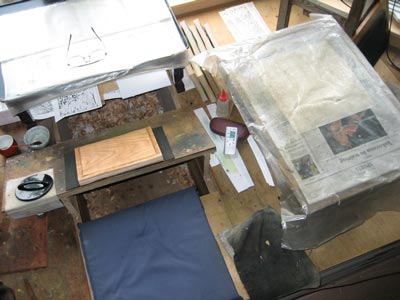
The paper waiting to be printed is in the package on the table directly in front of me (face down), and the sheets are moved one by one onto the block, and then into the package on the right (face up). When the batch is done, the position of the two packages is switched, of course ... ready for the next colour.
The block on the bench is a 'blank' block, and I am printing a beta-ban impression, with no pigment - just a small amount of paste and water. This is mostly for preparing the paper, giving it a nice smooth surface, ready for a clean impression of the key block, which will be next.
I am not using a real baren for this impression, but have pulled one of my 'bearing barens' out of the drawer. For printing a beta block like this one, no finesse is necessary at all, just basic power. (I also want to avoid wear and tear on my good barens as well.) This is the only impression on this print which will be done by the steel baren; all the rest will use my normal barens ...
The next shot shows the left side of the work area:
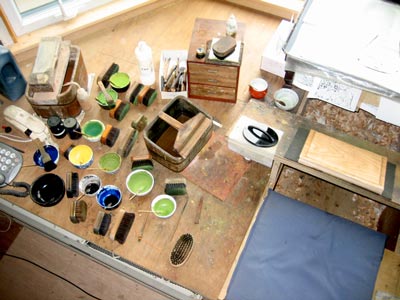
You can certainly get a good idea of the palette for this print! Over the next couple of weeks, I'll be working my way through all those greens ...

The thread continues in [River in Summer - 14] ...
Posted by Dave Bull at 11:22 PM | Comments (7)